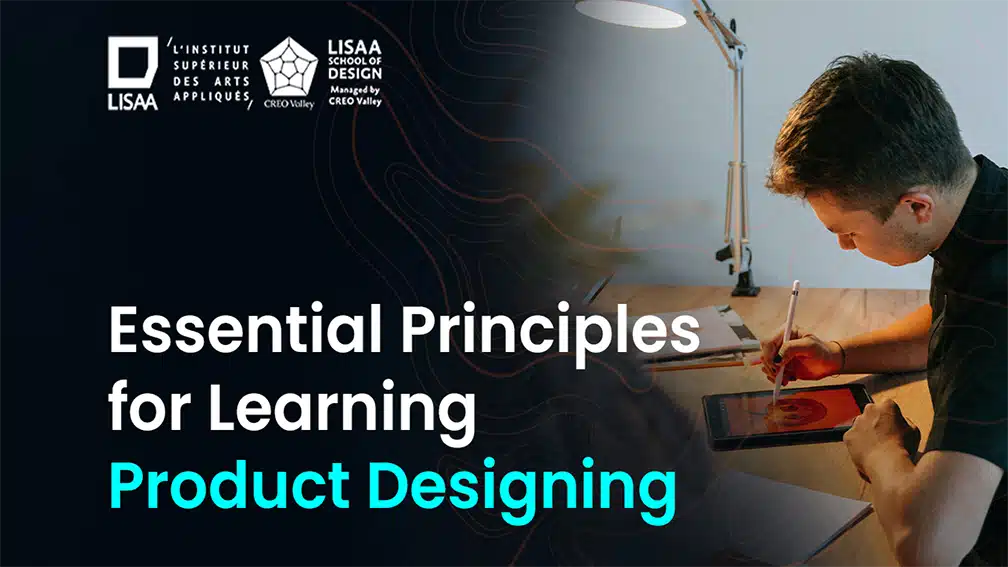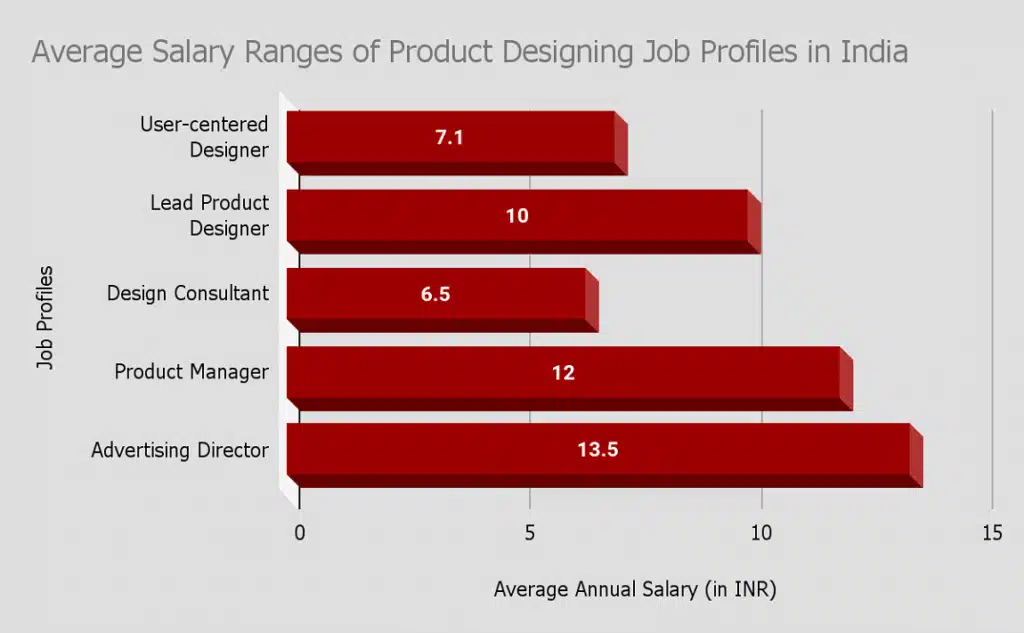
Are you aware of how drastically your daily lives are shaped by product design? Also, every element of your contemporary environment, from the stylish smartphones in your pockets to the comfortable chairs you sit on, has been thoughtfully thought out and created.
Now, if you are interested in learning the principles of product design, this blog can take you through the same and also lay a strong foundation for your journey.
Learn about Product Designing
Finding a market opportunity, precisely characterizing an issue, creating an appropriate solution, and testing the solution on actual users are all steps in the product design process. Until recently, you have mostly found the term connected to tangible objects, which are typically seen in retail establishments. But, right now it aligns with digital goods like websites and apps.
Amidst a time, when the Product Design and Development Market is poised to grow at a CAGR of 10.9 % by 2027, you can check out the following roles in this sector:
⦁ User-centered Designer.
⦁ Lead Product Designer.
⦁ Design Consultant.
⦁ Product Manager.
⦁ Advertising Director.

Source of Information: glassdoor.co.in (Self-created)
What are the Principles of Product Design?
A strong product design can set your company apart from the competition, and all outstanding products adhere to design principles. For your reference, we have outlined below some essential principles of product design:
⦁ Understanding User-Centered Design
Understanding user requirements, frustrations, and expectations is essential to user-centred design, which is based on empathy. Moreover, you can gain an understanding of the same through user behaviour observation, market research, surveys, and interviews. You can guarantee that your designed product meets the needs of users by using user-centred design.
⦁ Developing a Solid Design Brief
A design brief is an essential document that lists the goals, target audience, and limitations of your project. Furthermore, the principles of good product design guide throughout the entire process, thereby preventing departures from the intended result.
⦁ Conducting Thorough Research
Effective product design starts with thorough research. As such, you ought to be aware of the competitive environment, recognise market trends, and assess competitors. You can further widen your perspective and improve decision-making skills when you conduct studies on materials, manufacturing techniques, and technical developments.
⦁ Establishing a Creative Process
As a designer, you can improve stakeholder collaboration and expedite production by implementing a creative process. In addition, the process usually entails product design rules including brainstorming, sketching, prototyping, and assessment. Additionally, you can ensure your work quality, better manage time, and keep focus by implementing an organised creative process.
⦁ Emphasising Prototype Testing
Before devoting significant resources to large-scale production, prototyping is an essential step that lets you verify concepts. They can, nevertheless, range from basic hand-drawn sketches to sophisticated interactive computer models. Furthermore, getting feedback from potential users during prototype testing might be extremely helpful.
⦁ Prioritising Sustainability
Nowadays, product designers must take sustainability into account. In addition, sustainable product design principles include incorporating energy-efficient technologies, using environmentally friendly materials, and making sure the product’s lifecycle is as green as feasible. You can also help to create a cleaner future and draw in eco-aware customers by putting sustainability first.
⦁ Balancing Form and Function
A product that is visually appealing but not functionally useful is just as useless as one that is extremely functional but poorly designed. Therefore, you should understand the idea of harmonising form and function, which underlines the significance of designing goods that are not only aesthetically pleasing but also intuitive, efficient, and ergonomic. Additionally, keep in mind that a product that successfully combines form and function is successful.
⦁ Continuous Learning and Adaptation
Because of changing consumer needs, new technologies, and design trends, product design is an ongoing learning process. Additionally, you may keep your designs competitive and relevant by keeping up with the most recent design principles product design. You can also adopt a growth attitude, aggressively solicit input, and have an open mind to modify your designs and procedures as needed.
Also Read: Alternative Career Paths with an Interior Design Degree
How Can You Learn about the Principles of Product Design?
You can effectively search out and build an expanded understanding of the product design principles by enrolling in a study plan. Consider pursuing a Bachelor of Interior Design and Product Design at Bangalore’s LISAA School of Design if you want to gain the best expertise possible in product design.
To know some of this product design course highlights, please refer to the table below:
| Level of Education | Undergraduate |
| Course Duration | 4 years |
| Course ID | Bachelors in Interior Design |
| Minimum Requirement | Complete the 10+2 level of education from a recognised board |
| Selection Procedure | Take up the LISAA’s Creative Aptitude Test (CAT) |
Conclusion
Throughout this blog, we hope you understand why it is essential to master the principles of product design. And, embracing these principles will head you toward a rewarding career in product designing. Above all, keep in mind that this field will require you to have dedication, creativity, and a passion for problem-solving.
FAQs
⦁ What are the 7 main principles of design?
You can discover the 7 design principles, which typically include aspects like emphasis, alignment and balance, contrast, repetition, proportion, movement, and white space.
⦁ Which ethical factors should you consider while product designing?
As a product designer, you must take into account moral considerations such as data security, privacy, inclusivity, and environmental effects. And, it’s equally important to place the welfare of consumers and society at large first.
⦁ What are product designing tools?
Some essential product design tools include sketching pencils, design software, prototyping tools, and 3D modeling software.
⦁ What do I need to learn product design?
You should gain proficiency in sketching, drawing, and prototyping to study product design. Moreover, a thorough understanding of user-centered design, and CAD tools is quite beneficial.
⦁ What are 5 of the principles of design?
The 5 principles of product design include-
⦁ Space.
⦁ Line.
⦁ Form.
⦁ Colour.
⦁ Texture.